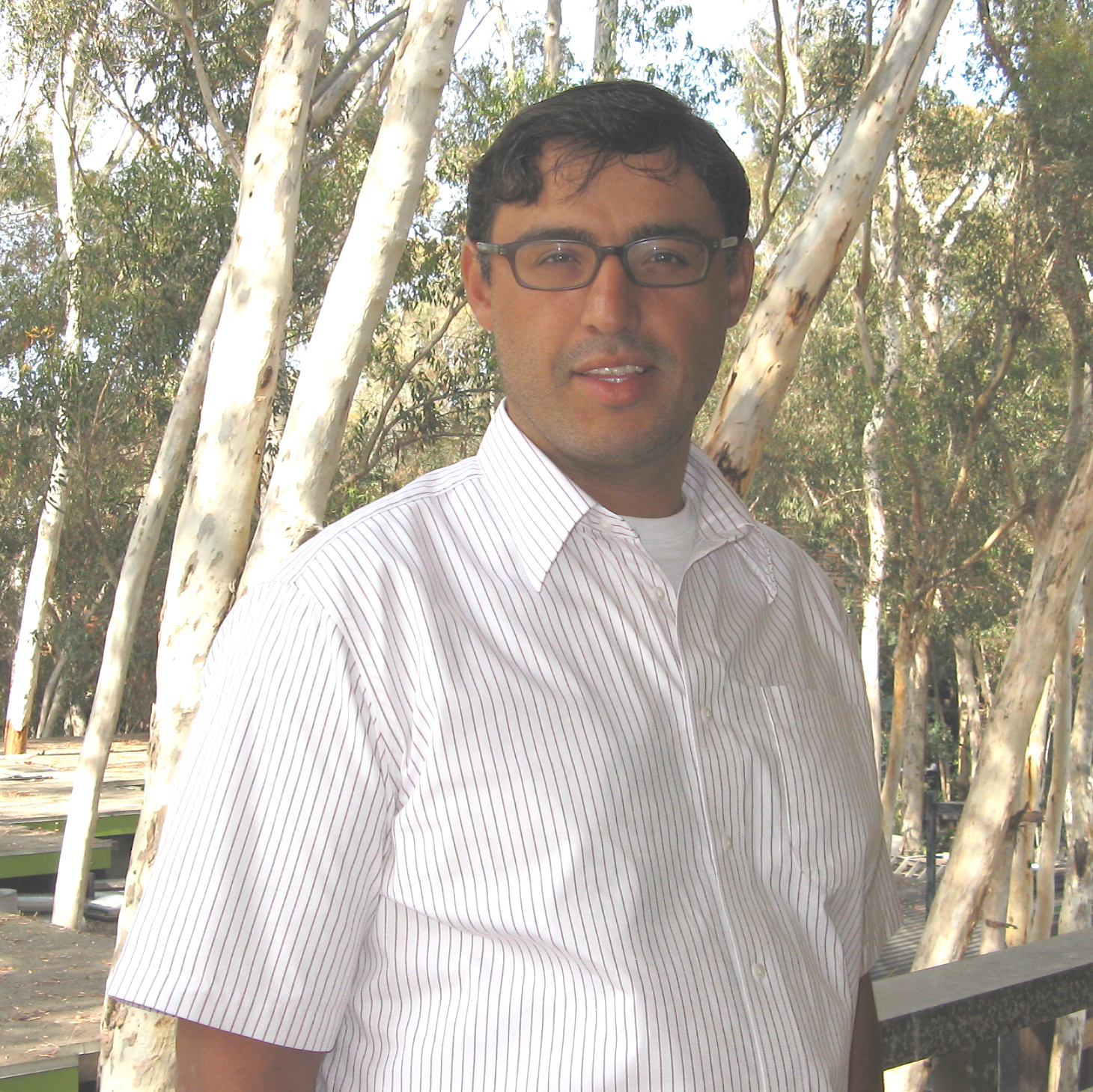Genome-wide architectural roles of CTCF and cohesin in nuclear function
Celso Espinoza
Appointment Period: 2009-2012, Grant Years: [25,26,27] (Minority Supplement Slot)
 Much interest has been generated around the genome-wide binding and functioning of CTCF (CCCTC-binding factor), especially in relation to gene regulation. The genome-wide roles of CTCF include cellular architecture and chromatin organization. To highlight the importance of these roles, mutations in CTCF are linked with tumor formation in breast and colon tissues. Further, CTCF zinc-finger mutations are associated with Wilms tumors, which form predominantly in children's kidneys.
Much interest has been generated around the genome-wide binding and functioning of CTCF (CCCTC-binding factor), especially in relation to gene regulation. The genome-wide roles of CTCF include cellular architecture and chromatin organization. To highlight the importance of these roles, mutations in CTCF are linked with tumor formation in breast and colon tissues. Further, CTCF zinc-finger mutations are associated with Wilms tumors, which form predominantly in children's kidneys.
Since my appointment to the training grant, I have dedicated my time to developing methodology to explore and better understand the of CTCF genome-wide. The methodology consists of chromatin immunoprecipitation (ChIP) followed by application of chromosome conformation capture (3C). The aim of conducting the experiment in this manner is to capture elements that are in proximity to each other. With this methodology, we have learned much about how genes are being regulated. The main role of CTCF appears to be to regulate loop formation, and the loops appear to regulate the recycling (or delivery) of RNA polymerase II to the locations wherein it is needed.
My work is of practical significance and benefit because a deeper understanding of gene regulation can help us better develop and select appropriate drugs for specific targets, which in turn can minimize the side effects of drugs and thereby provide better care, quality of life, and prognoses for people affected by the aforementioned cancers.
PUBLICATIONS (resulting from this training)
Celso Espinoza, Inkyung Jung, Gary Hon, Ulrich Wagner, Saurabh Agarwahl and Bing Ren. Architectural roles of CTCF genome-wide (in preparation).
Lin YC, Jhunjhunwala S, Benner C, Heinz S, Welinder E, Mansson R, Sigvardsson M, Hagman J, Espinoza CA, Dutkowski J, Ideker T, Glass CK, Murre C. A global network of transcription factors, involving E2A, EBF1 and Foxo1, that orchestrates B cell fate. Nat Immunol. 2010 Jul;11(7):635-43. PMID: 20543837 / PMC2896911
Hawkins RD, Hon GC, Lee LK, Ngo Q, Lister R, Pelizzola M, Edsall LE, Kuan S, Luu Y, Klugman S, Antosiewicz-Bourget J, Ye Z, Espinoza C, Agarwahl S, Shen L, Ruotti V, Wang W, Stewart R, Thomson JA, Ecker JR, Ren B. Distinct epigenomic landscapes of pluripotent and lineage-committed human cells. Cell Stem Cell. 2010 May 7;6(5):479-91. PMID: 20452322 / PMC2867844
Espinoza CA, Ren B. Mapping higher order structure of chromatin domains. Nat Genet. (2011) 43:615-6. PMID: 21709679.
Other publications (prior to Training Grant appointment):
Mariner PD, Walters RD, Espinoza CA, Drullinger LF, Wagner SD, Kugel JF, Goodrich JA. Human Alu RNA is a modular transacting repressor of mRNA transcription during heat shock. Mol Cell. 2008 Feb 29;29(4):499-509. PMID: 18313387.
Espinoza CA, Goodrich JA, Kugel JF. Characterization of the structure, function, and mechanism of B2 RNA, an ncRNA repressor of RNA polymerase II transcription. RNA. 2007 Apr;13(4):583-96. Epub 2007 Feb 16. PMID: 17307818; PMC1831867.
Espinoza CA, Allen TA, Hieb AR, Kugel JF, Goodrich JA. B2 RNA binds directly to RNA polymerase II to repress transcript synthesis. Nat Struct Mol Biol. 2004 Sep;11(9):822-9. Epub 2004 Aug 8. PMID: 15300239.
 Much interest has been generated around the genome-wide binding and functioning of CTCF (CCCTC-binding factor), especially in relation to gene regulation. The genome-wide roles of CTCF include cellular architecture and chromatin organization. To highlight the importance of these roles, mutations in CTCF are linked with tumor formation in breast and colon tissues. Further, CTCF zinc-finger mutations are associated with Wilms tumors, which form predominantly in children's kidneys.
Much interest has been generated around the genome-wide binding and functioning of CTCF (CCCTC-binding factor), especially in relation to gene regulation. The genome-wide roles of CTCF include cellular architecture and chromatin organization. To highlight the importance of these roles, mutations in CTCF are linked with tumor formation in breast and colon tissues. Further, CTCF zinc-finger mutations are associated with Wilms tumors, which form predominantly in children's kidneys.